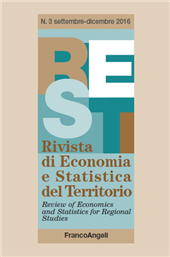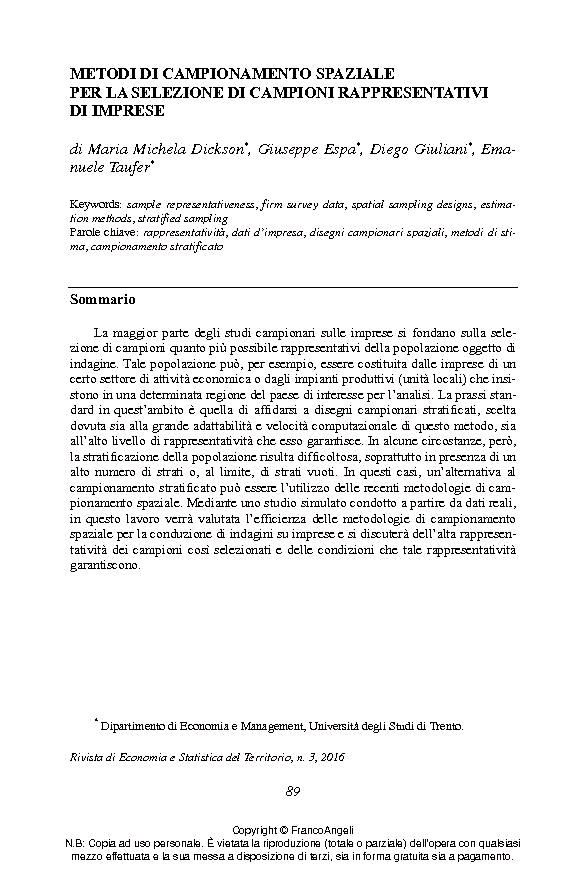2016 - Franco Angeli
Articolo
Versione Digitale
Download | Copia/incolla | Stampa
Metodi di campionamento spaziale per la selezione di campioni rappresentativi di imprese
89-99 p.
- Objectives An important issue in economic studies involving firms is the representativeness of selected sample of units, in order to mirror the distribution of population variables in the sample. Stratified sampling is one of the most used sampling scheme in this context, but sometimes it could be a computationally unfeasible design, due to population structure and/or variables characteristics. In the present work, the authors show that a valid alternative to stratification is represented by spatial sampling methods, which are not affected by the above-mentioned roblems. Methods and Results. By means of a Monte Carlo simulation study on a real population of firms, the authors show that it is possible to use spatial sampling methodologies (Local Pivotal Methods and Spatially Correlated Poisson Sampling) as almost equally efficient alternatives to stratified sampling. The study has a dual nature.
- On one hand, it has been proved that spatial sampling lead to efficient estimates, evaluated in terms of relative RMSE, which can be equivalent to those obtained by stratification. On the other hand, by a comparison in terms of spatial balance index, the authors show that spatial methods bring to a very high level of representativeness. Conclusions. Sample representativeness is a central issue in literature and practice. Stratified sampling guarantees that sampling data represent as better as possible the structure of population under study. In some cases, the implementation of this method became unfeasible. In the present work, it has been proved that it is possible an approach based on the use of spatial sampling methods, which are less subject to operational problems but they can lead to high level of representativeness. [Publisher's Text].
-
Informazioni
Codice DOI: 10.3280/REST2016-003006
ISSN: 1972-5000
PAROLE CHIAVE
- Rappresentatività, dati d'impresa, disegni campionari spaziali, metodi di stima, campionamento stratificato
- Sample representativeness, firm survey data, spatial sampling designs, estimation methods, stratified sampling
-
Nello stesso fascicolo
- Introduzione
- L'eterogeneità spaziale nello sviluppo locale in Italia : un'analisi basata sulla costruzione di un indicatore sintetico
- Modelli spaziali di regressione quantilica per l'analisi della convergenza economica regionale
- La sopravvivenza immediata delle start-up italiane del settore manifatturiero sanitario : un'analisi multilevel
- La crescita economica nelle regioni europee nuts 3 : un'analisi delle economie alpine nel contesto dell'unione europea
- Metodi di campionamento spaziale per la selezione di campioni rappresentativi di imprese
- Fiducia verso persone e istituzioni : evidenze da una survey sul capitale civico degli studenti
- Un test per la diseguaglianza delle opportunità dovuta a fattori regionali



